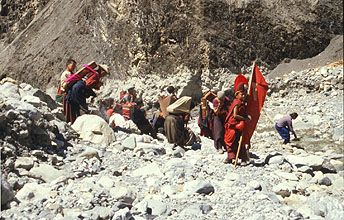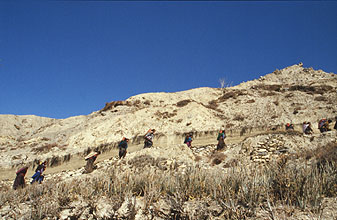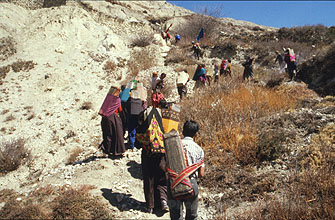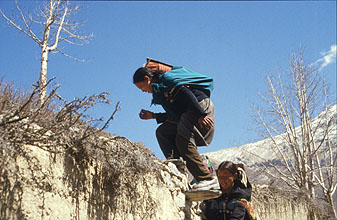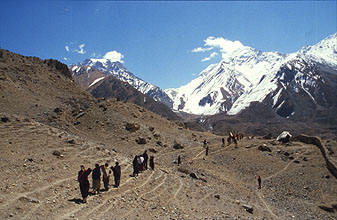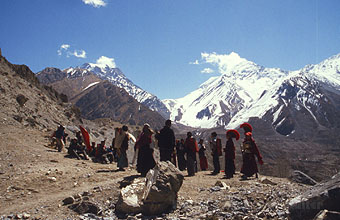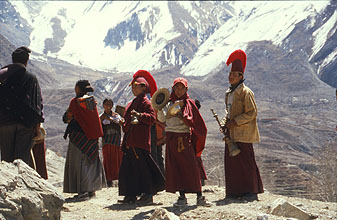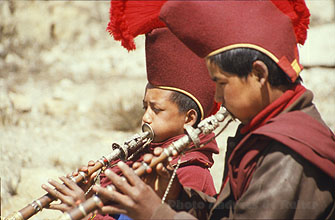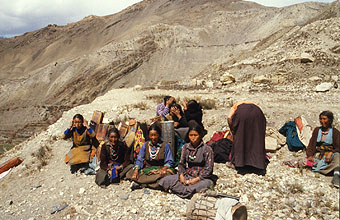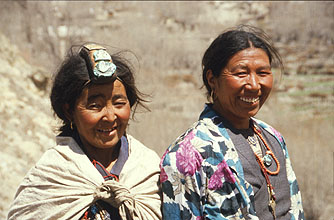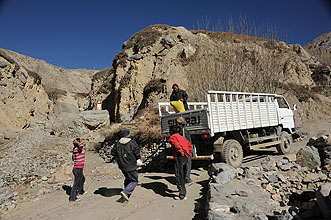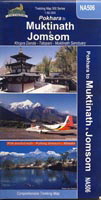|
|
Nepal, Trekking around Annapurna - the Jomsom side
you can enlarge most small pictures by clicking in on of the corners.
Jhong or Dzong The whole north side of the Muktinath valley is a long very dry hillside with often strongly eroded sandstone slopes. Jus on a few green spots you will find fields and beautiful villages. They are lined like shining pearls on a necklace; all of them are absolutely worth visiting them. After Chongur Jhong is the biggest one. It is often named also Dzong on several maps.
For many years the trail to Kagbeni through this villages was forbidden for trekkers as they were in the restricted area of upper mustang, But already long ago the villages succeed that Jong was an exception of this rule. Since 2006 it is now officially allowed to walk down from Ranipauwa to Kagbeni on the northern trail.
Above the ridge of jong is a big monastey and the ruins of the old fort (=Dzong) which gave the village its name
On the way to Jhong there is a little hermitage and once I passed by the women of the village had gathered to celebrate a puja with a lama monk.
Entering the village
The ruins of the old Dzong.
The village Like in many villages of the region, the people are migrating to the bigger cities like Pokhara or Kathmandu to escape the harsh and poor life up here. Especially in winter many people go to the warmer parts of Nepal and leave their house deserted.
The pictures above were taken in December
These two pictures were taken in September, but already then autumn starts and the first leaves are getting yellow. The gompa of Jhong
The Gompa is situated on a ridge which extends into the valley and offer breathtaking views all over the Muktinath valley and the Thorong la in all its beauty.
One can directly see on the hats of the statues that this is a Nginma monastery, one of the red hat buddist lines.
On the roof just the perfect viewpoint ;-)
Die große Prozession um um Regen zu bitten
The road. There is now a dirt road connecting Kagbeni to Muktinath Ranipauwa passing by Jhong. People are very happy about this, because life is getting much easier for them. Goods from Pokhara are now much cheaper and in the same time they can sell their farm products at a higher price. And if someone has to be brought to hospital this is now much faster. So there is a little bit of traffic between Ranipauwa and Jhong, as it is easier to take the southern valley side. Between Jhong and Kagbeni on the northern valley side there is nearly no traffic at all.
Accommodation: In 2011 there were just two lodges, both rather basic. TheTashi Ling Guesthouse is situated directly on the northern entrance of the village, it had very hard matrasses. I like very much the one on the way to the gompa just near the ruins.. From its dining room you have a splendid view on the Thorong La. What a beautiful place to start the day ! Also the Monastery itself seems to have a new lodge facility. How to continue?
Overview Annapurna region 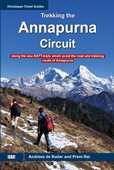 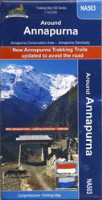 To the page To the page
|
||||




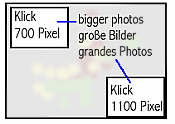

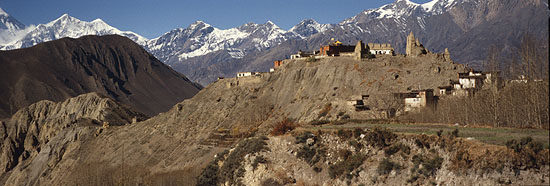

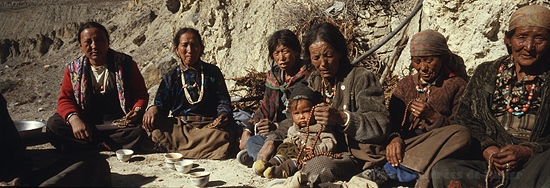

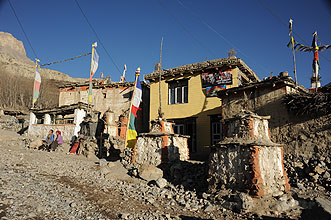
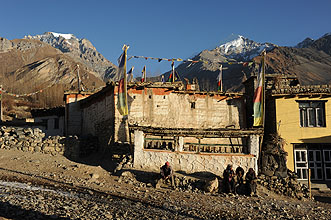
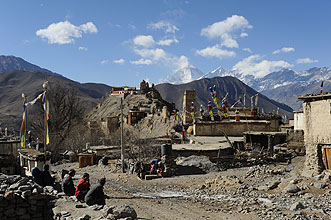 This is the name for fortress and gave the village its name. As the walls were
only built with dried clay, they did not last for centuries and only some ruins are remaining. You find other Dzong ruins in Jharkot and Kagbeni.
This is the name for fortress and gave the village its name. As the walls were
only built with dried clay, they did not last for centuries and only some ruins are remaining. You find other Dzong ruins in Jharkot and Kagbeni.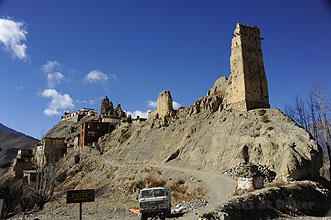
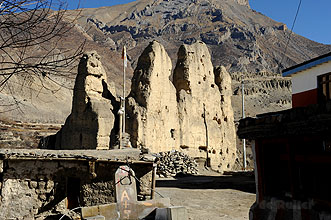
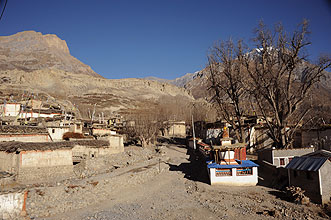
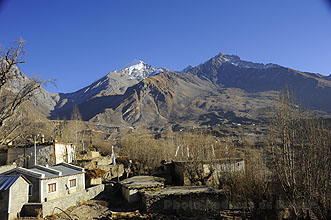
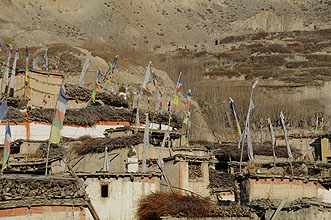
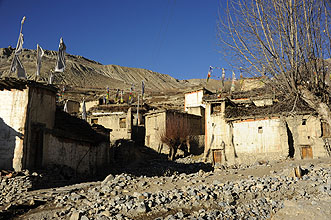
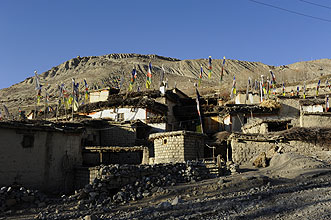
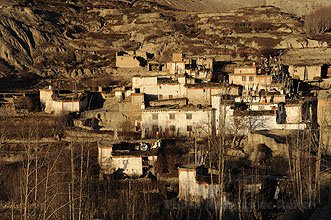
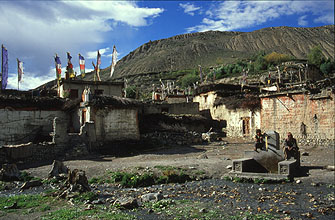
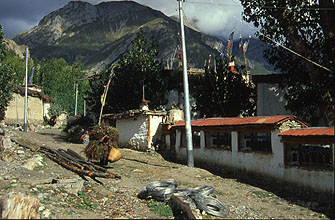

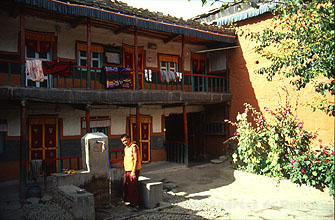
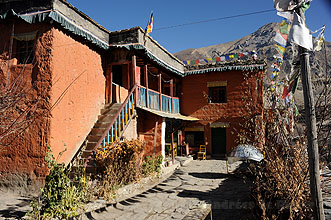
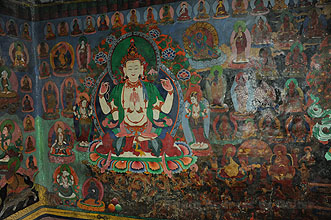
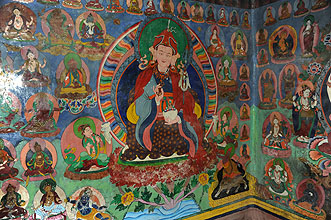
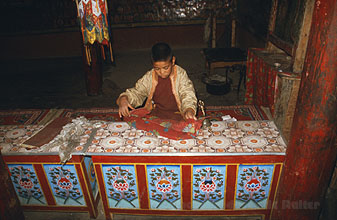
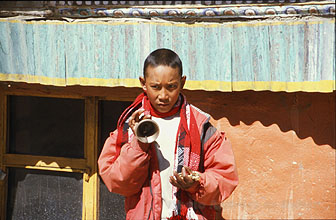
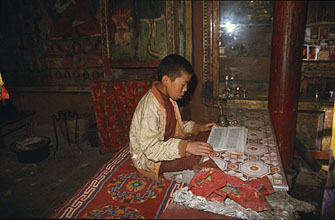
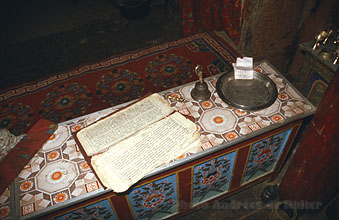
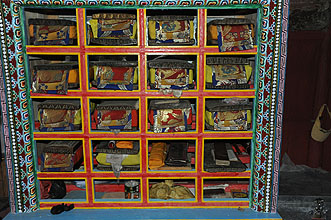
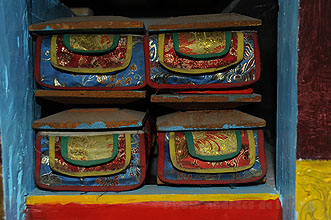
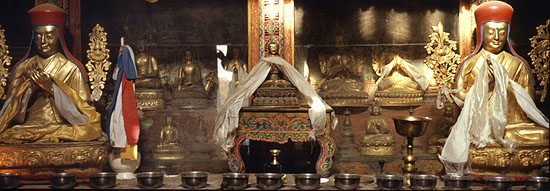
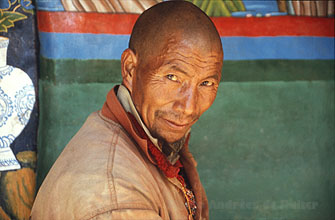
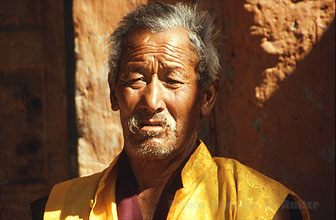
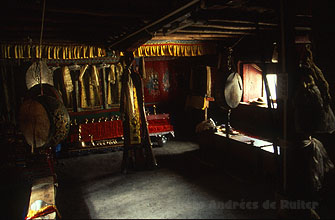
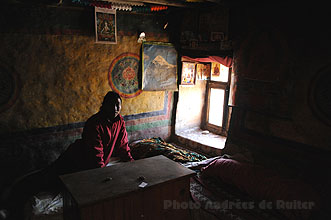
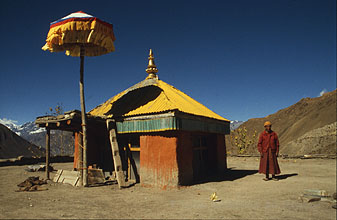
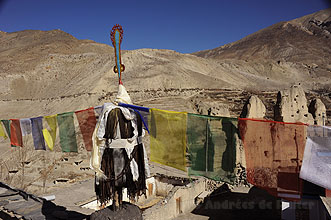
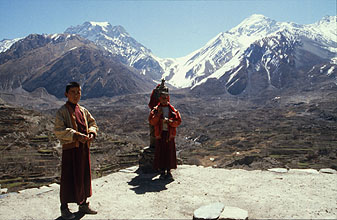
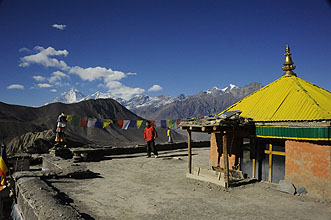
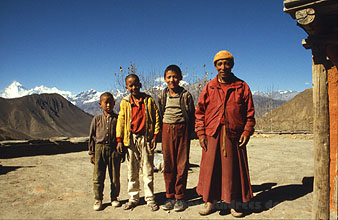 Surely a good place to make a shot of Thorong la
Surely a good place to make a shot of Thorong la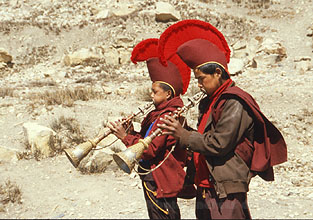 I
I